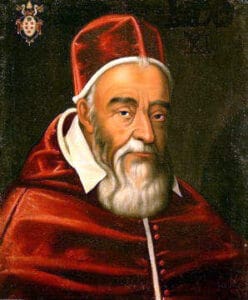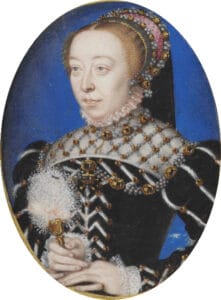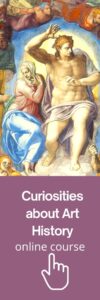In this article, find out who the Medici were and why there is such a large concentration of works of art in the City of Florence.
Read in Português | Español.
By Diana Ferreira, author of the online course The history of art through curiosities and unusual facts.
The Medici
Along with other Italian families such as the Visconti and the Sforza of Milan, the Este of Ferrara, and the Gonzaga of Mantua, the patrician Florentine Medici family had central power in Florence for 300 years, with brief interruptions.
From the 14th century with Cosimo the Elder, to the 18th with Gian Gastone.
The Medici were one of the best known and most prestigious families in Italian history.
Originally from Mugello, they moved to Florence in the thirteenth century, attracted by the economic potential of the city and abandoning agriculture to engage in financial activity (bankers).
They saw their fortune and the family’s influence gradually increase, reaching a peak under the government of Lorenzo the Magnificent
They did not come from the nobility and John de Bicci de Medici, considered the “founder” of Medici power, was not from a wealthy family.

Jonh of Medici
Popes, Grand Dukes and Queens
From the house of Medici came four popes, Leo X (p. 1513-1521), Clement VII (p. 1523-1534), Pius IV (p. 1559-1565), and Leo XI (for 26 days in April 1605).

Leo XI
Seven grand dukes: Cosimo I (1519-1574), Francesco (1541-1587), Ferdinand I (1549-1609), Cosimo II (1590-1621), Ferdinand II (1610-1670), Cosimo III (1642-1723), and Gian Gastone (1671-1737).
Two queens of France: Catherine de Medici (1519–1589), consort of Henry II; Maria de Medici (1573–1642), consort of Henry IV.

Catherine de Medici, portrait attributed to François Clouet.
The Medici Patronage
With the Medici, Florence lived an unrepeatable period in Italy’s most splendorous era.
era.
There were years of artistic fervor and great cultural development, in which no work was finished without starting another.
All the great architects, painters, and sculptors of the time had their hands full for so many commissions.
Cosimo the Elder soon realized the propagandistic importance of his donations and that his art collections increased the family’s prestige.
The Medici’s patronage in intellectual, cultural, scientific, and artistic life gave a great boost to the Renaissance era in Florence and a particular fame to the family.
Great collectors, they made important commissions to the best artists and protected them.
Cosimo the Elder (1389-1464) founded in 1444 the first public library in Europe (thirty years before the Vatican) and sponsored the translation of Plato’s texts.
Cosimo I was patron of Donatello, Filippo Lippi, and Paolo Uccello.
Lorenzo the Magnificent (1449-1492) welcomed the young Michelangelo into his home after seeing his precocious talent as a painter.
He was treated like a son, with his own room and ate at table with the prestigious family.
Lorenzo was also responsible for the collection at the Uffizi Gallery and the Palatine Gallery at the Pitti Palace.